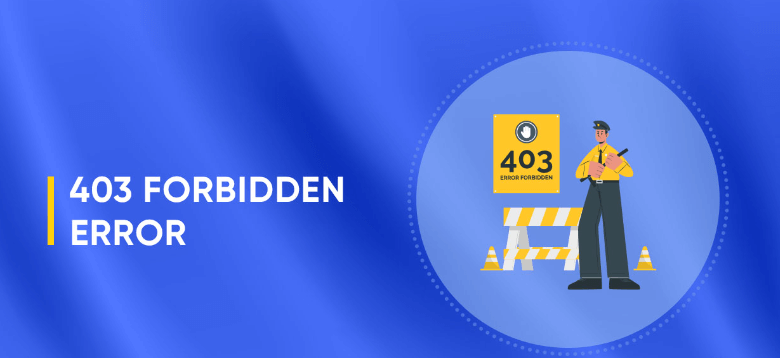This article explains what is the forbidden error in SharePoint, exploring the various causes of forbidden error in SharePoint. It provides a comprehensive guide to fixing the 403 forbidden error, including troubleshooting steps, solutions, and preventative measures to help users maintain smooth SharePoint operations.

SharePoint users often encounter various errors, and one of the most common errors might be the forbidden error. This error typically indicates a lack of permission to access certain content or perform specific actions within SharePoint. Understanding this error and knowing how to address it is crucial for maintaining a smooth workflow and ensuring effective use of SharePoint.
All in all, the forbidden error in SharePoint, often represented by the HTTP status code 403, occurs when a user tries to access a resource they do not have permission to view or interact with. This error can be very frustrating as it prevents users from accessing essential files, documents, or sites within SharePoint when necessary.

In most cases, when you encounter the forbidden error, you will receive a 403 error message. Main causes of the forbidden error include:
Insufficient user permissions: This occurs when user attempting to access a SharePoint resource does not have the necessary permissions assigned to their account. SharePoint operates on a permission-based model where users must be explicitly granted access to sites, lists, libraries, or items within them. If the user's permission level does not include the required access rights (such as view, edit, or manage permissions), SharePoint will return a Forbidden Error.

Site collection or site permission settings: SharePoint allows administrators to configure permissions at both the site collection level (which includes all sites within a site collection) and individual site levels. If the permission settings are configured in a way that restricts access for certain users or groups, attempting to access a site or resource within that site collection without the appropriate permissions will result in a Forbidden Error.
Incorrect role group settings: SharePoint uses role-based access control (RBAC) to assign permissions through role groups. Role groups bundle permissions together based on common tasks or responsibilities (e.g., Visitors, Members, Owners). If a user is not assigned to the correct role group that grants access to the resource they are trying to access, they will encounter a Forbidden Error.
Accessing a list or library without sufficient permissions: Lists and libraries within SharePoint can have unique permission settings separate from their parent site. If a user attempts to access a specific list or library without having been granted sufficient permissions directly on that resource, SharePoint will deny access and return a Forbidden Error.
To fix forbidden error in SharePoint, you can try the following solutions one by one:
Administrators or site owners should review the user's permissions within SharePoint. This can be done by checking the user's permissions directly on the resource or by reviewing their membership in SharePoint groups that grant access.
Administrators should log in to the SharePoint admin center or site settings, navigate to the permissions settings for the site collection or site in question, and ensure that the user or relevant group has been granted appropriate permissions.
Administrators can resolve the forbidden error by navigating to the SharePoint admin center or site settings, accessing the permissions or site permissions section, and editing the user's membership in relevant role groups. Ensure that the user is added to a role group that aligns with their required level of access.
Administrators should navigate to the list or library settings within SharePoint, access the permissions settings for that specific list or library, and verify that the user or relevant group has been granted the necessary permissions.
If you are the administrator, you can take the above measures to fix the problems. If you are not, please contact your administrator for help.
Preventative measures can help avoid forbidden errors in the future. Regular audits of permissions, routine checks of configuration settings, and proactive network monitoring can prevent common issues that lead to forbidden errors in SharePoint.
Besides, providing ongoing training for SharePoint users and maintaining robust network security protocols are also long-term fixes to ensure that forbidden errors do not recur.
In summary, troubleshooting the Forbidden Error in SharePoint involves ensuring that users have appropriate permissions at multiple levels: individual resource permissions, site or site collection permissions, role group memberships, and specific list or library permissions. The above content should give you clear guides to get rid of the error and regain the access to files.
Last, we would like to introduce a powerful multiple cloud manager named MultCloud to you. As its name suggests, it is a tool that allows you to manage multiple cloud drives together, without switching frequently. By far it has supports more than 30 personal cloud drives and 5 business clouds, all popular cloud services on the market together. As long as you add your clouds into MultCloud, you can effortlessly access to your cloud data, and perform cloud to cloud transfer, backup or sync task.